Going Big: Painting Murals with Jessa Gilbert
Year-round, Jessa Gilbert creates artwork derived directly from her adventures in the backcountry on the skin track, her mountain bike, or out of a tent. Her outdoor-inspired pieces capture the flow and lines of her surroundings, which she displays as sketches and paintings on her social accounts, in design projects, or at local galleries. Jessa has also experimented with large-scale paintings, using everything from snowcats to shipping containers as her canvas. Recently, we teamed up with Jessa to paint a massive mural on our newly opened Burton Denver Flagship Store in the RiNo District. We caught up with Jessa between brush strokes to discuss her process, what she's learned from painting murals and her plans for the upcoming season.


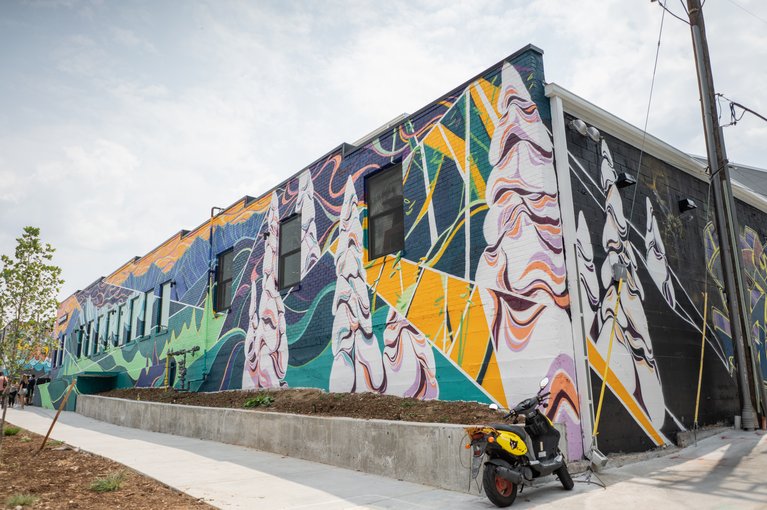
An Interview with Jessa Gilbert
Where are you from? Where do you live now? When did you start snowboarding and where was it?
I grew up in Red Hook, NY, a small town in the Catskills. Now I live in Revelstoke, British Columbia, Canada. I learned how to snowboard at a small New York mountain called Catamount when I was 10.
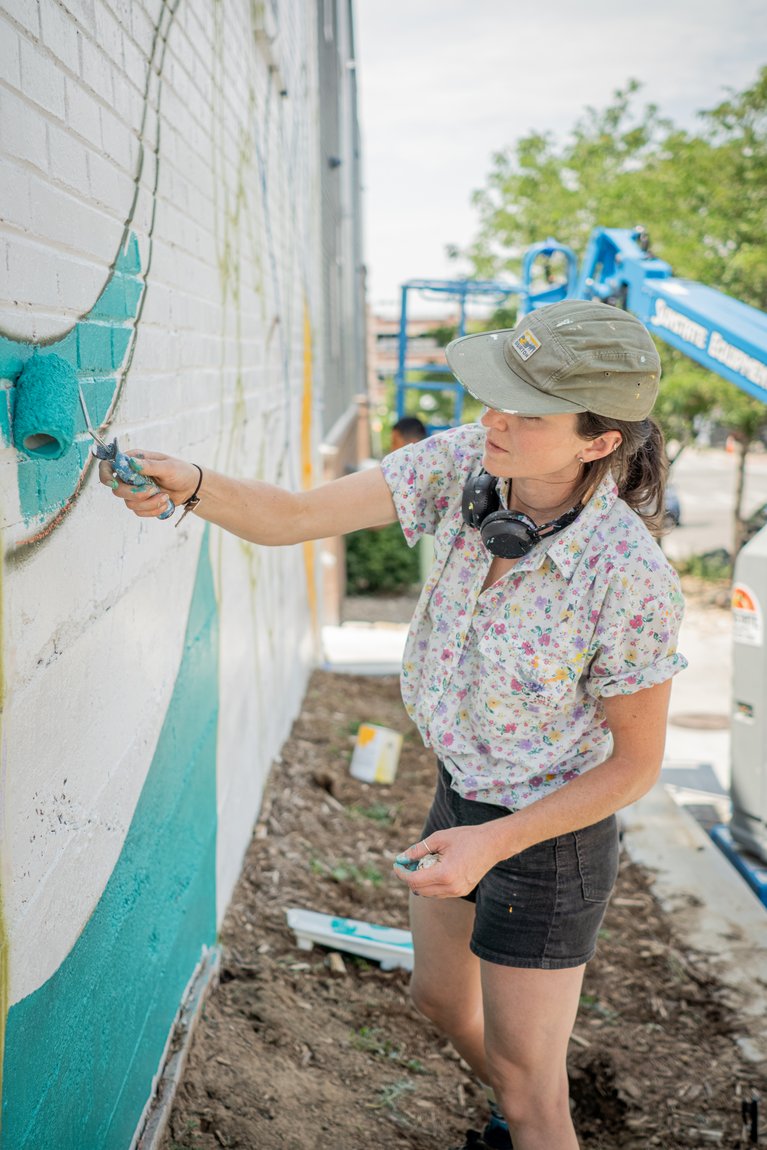

"I still think of my work through the lens of portraiture - I’m trying to capture the feeling, tone, and sense of a place and moment."
When did you start making art and when did you realize you wanted to make art for a living?
I’ve been making art as long as I can remember. I grew up in a hectic divorced household with three brothers, and artwork was a creative release for me from a young age. It seemed to be the only place I could find some quiet and offered me a way to express how I was feeling. I always knew I’d pursue art, though I considered it something I would pursue once I was old and unable to chase dreams of being a prosnowboarder. Turned out “old” came around 22 from injury and a refocusing into product development for women’s cycling company in Vermont.
Moving to BC in 2013 really changed my focus for my artwork, both in subject matter (the work became more landscape in nature) and in attention (it became merged with my adventurous lifestyle, not isolated from it). I always created paintings and drawings outside my day job. While I waited for my Permanent Residency application to go through, I worked for MEC as a digital asset coordinator. I assumed this would be the nature of things, and was happy with that, though in time I was able to take on more commissions for print design, paintings, and then murals to the point where I could sustain a living on my artwork. In 2017 I quit my job at MEC and took my art full time… it’s been a wild ride since.
Your work is clearly inspired by the outdoors. Do you ever draw inspiration from other places?
There's a lot that inspires my work, whether it’s the act of painting and creating or the act of travel and play. I still think of my work through the lens of portraiture - I’m trying to capture the feeling, tone, and sense of a place and moment. The subject doesn’t have to be a mountain or outdoor setting, though those are the places I like to find my feet. I’m inspired by people and cities all the same - the way people move through spaces, traffic, texture, and the interactions between ourselves and the places we exist within.
If I had to boil it down, I’d say I’m most interested in how to portray the passing of time, whether that is a person moving through space or the sun rising and setting. There’s a history of change I’m trying to capture in my paintings and drawings, and a continual quest to finding a way to articulate all this activity in a static medium that will never change (ie: paint/ink).
I believe in the functionality of artwork to inspire change, and I use my artwork as a way to advocate for sustainable living, preservation of wild spaces, and the need for us to slow down and appreciate what we have in front of us. I started taking my materials along on hikes, split board trips, and backpacking adventures because I wanted to capture these pristine places I was continuously awestruck by for my future memories, and to share them with others. I hope that these painted or drawn celebrations of wilderness can serve to inspire others to get outside, create relationships with their local landscapes (including urban centers), and in turn protect them. It’s much easier to protect something/someone you have a relationship with, so, in a way, these paintings are representations of my relationships with those places in that moment… I’ll stop it there before I get too long of a monologue going but know there’s a lot of thinking behind the work (even/especially the simplified, single line drawings).
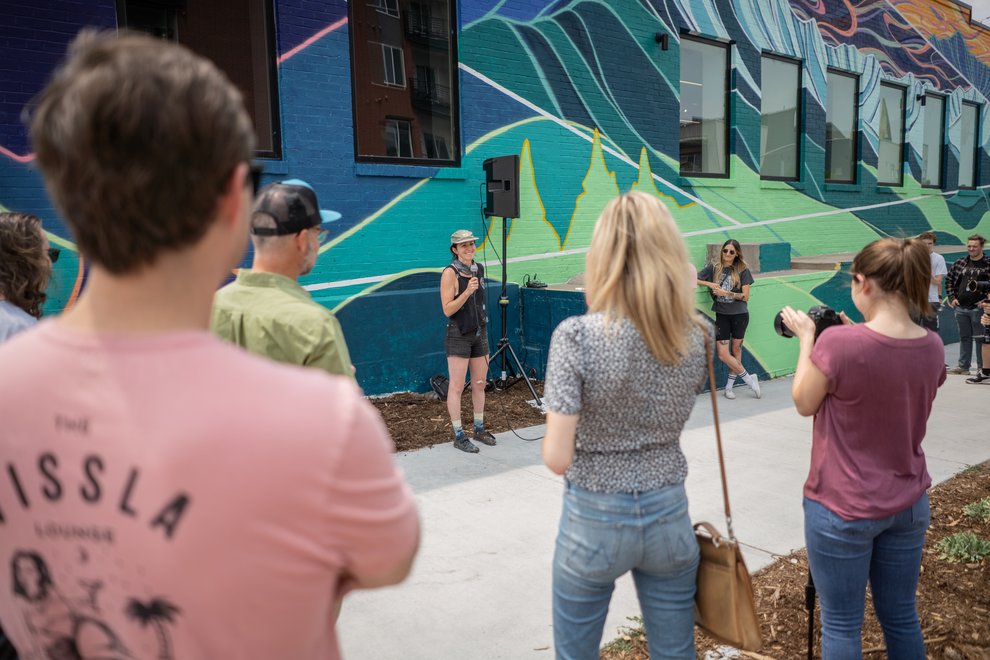
How did you get into painting murals and what effects did it have on your process?
My first outdoor mural was a 2500 square foot mural in Whistler, BC at the Creekside Underpass. Aside from it being my first mural, the location created a lot of challenges. The walls flank either side of a pedestrian walkway underneath the highway and are separated by a wide creek. Underneath the walls are large boulders, many of them unfixed, making for uneven footing, not to mention a ladder or scaffolding.
I spent the better part of a month on this project, learning the intricacies of spray paint, having a generator stolen (then returned), hauling paint cans up and down into the underpass every morning and night, all the while wondering if I was ever going to finish before the winter set in. I’m stubborn and not afraid of hard work, so I never questioned IF I could complete it… it was more a matter of how much it would take. I learned so much from that project - painting on a large scale, working with another person (I hired a helper), asking for help, and the daily dance between grit and grace.
What does your process for making a mural look like?
Luckily, my process has refined a LOT since my first mural. It still begins with many sketches - I go over difference compositions, color palettes, feedback from the community/patron, and lots of on-site photos to mock up digitally. the first few days are gridding and outlines, where I put a rough sketch of the mural design on the wall to make sure everything lines up as I designed/desired. I also do this because I believe in the importance of considering the environment in the design, and some of that is tough to determine prior to being on-site (example: where does the natural light come from? How do people move around the space? Is there landscaping to consider?) I want the mural to feel it belongs to the specific space and, in turn, the community there. Once I’m happy with the outline, I go to town with color and big fills. This part is messy, fun, and frustrating all in one.
Once the wall is fully covered in color, I go back to my sketches and maybe mock up a few different possibilities to make sure my original is still the preferred. If all of this rolls smoothly, I finish the piece with details, outlines, and refinements until it no longer needs me. Then… I give it away.
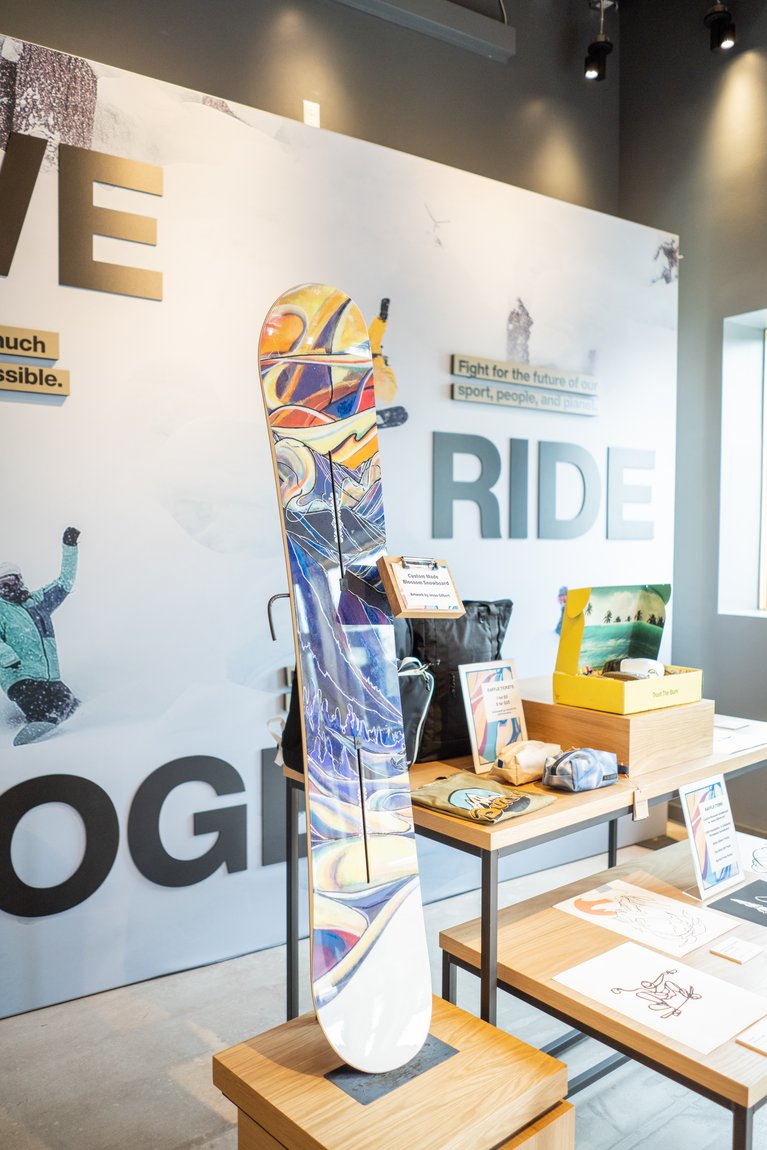
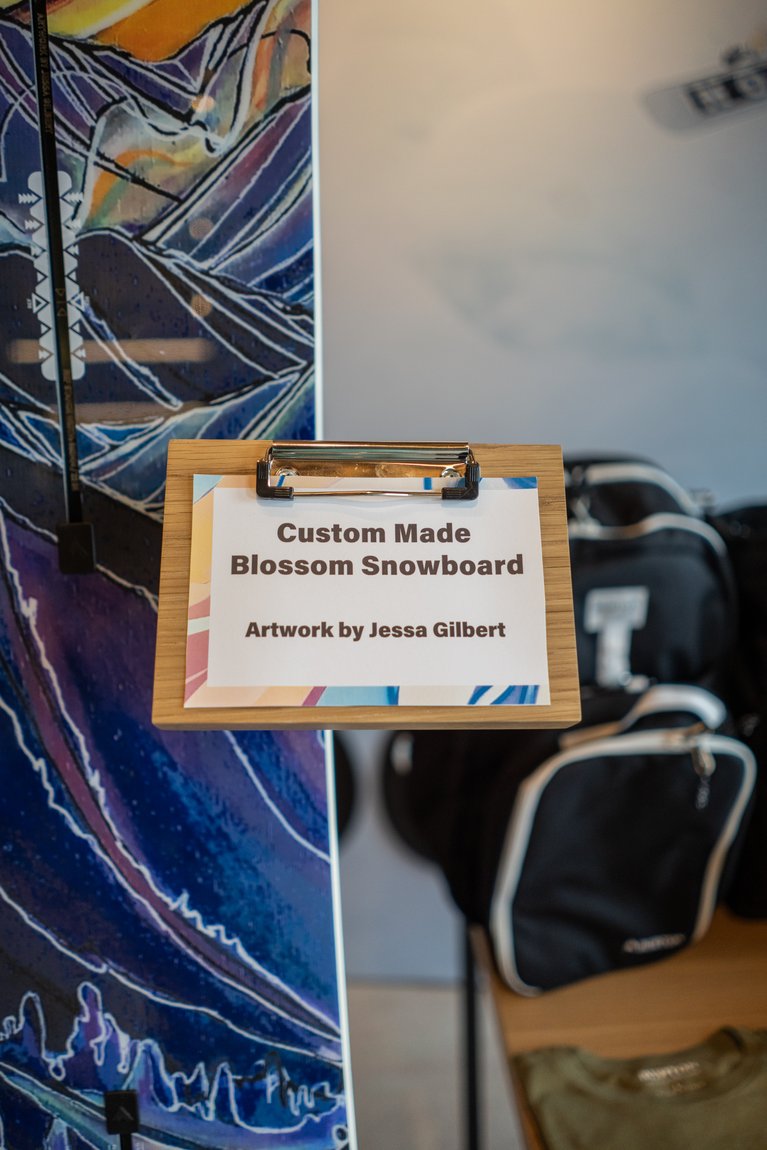
How long did it take you to paint the Burton Denver Flagship Store mural and how many gallons of paint did it take?
The new Burton RiNo location took a week and a half (13 days), with the help of a few Chill Denver/Third Way Center youth. There’s probably about 8 gallons of paint, 15 cans of spray paint, and 1,000 gallons of sweat (it was a hot two weeks in Denver).
How was painting with Chill Foundation participants?
It was so rewarding to work with the Chill Foundation youth. I absolutely love sharing the murals with their respective communities, but I don’t often get to work directly with others. It’s a true joy to share the process with others, and hopefully inspire some future muralists. A few of them arrived with trepidation towards painting, saying “I’ve never painted before” or “I don’t know how” and seeing them take on the paint rollers and brushes with ease, and really enjoy the act of mark making, was a true joy, personally.
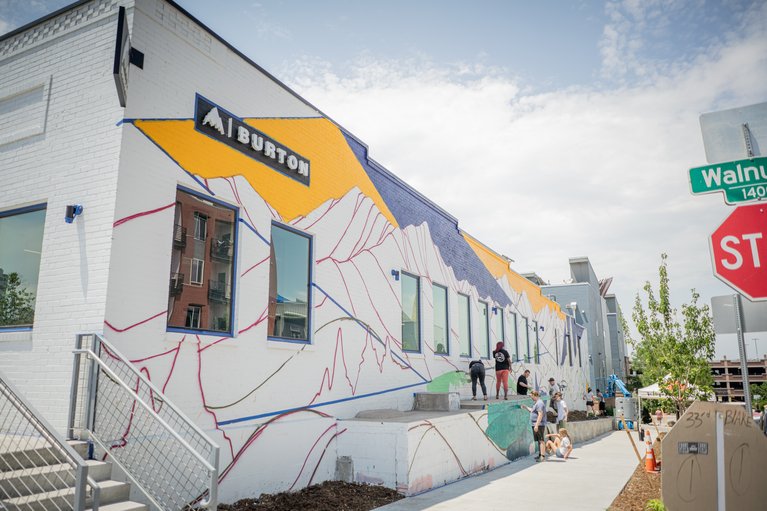

What’s next for Jessa?
My immediate next would be getting back into Canada through the new Covid restrictions… ha!
I have a few more projects in store for this summer, but my next big thing would be a solo exhibition in Revelstoke at the Revelstoke Visual Arts Centre! I’ll be showcasing a collection of new paintings, drawings, and film photos from recent adventures. I’m really excited to be able to welcome people into the process in a gallery format that will include much of the behind-the-scenes of these artworks.
I’ll be back to guiding in Revelstoke and at Baldface this winter and pursuing my own objectives on my splitboard. There’s a lot to unpack after the last three months on the road in the US this summer, so perhaps that should really take priority…